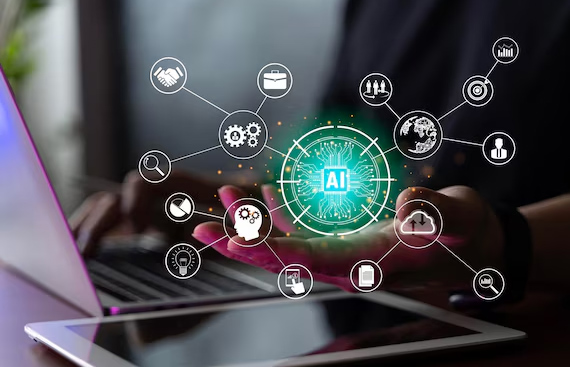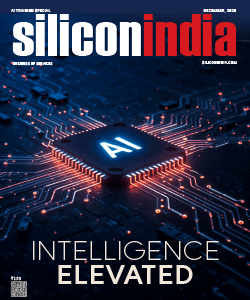6 Best AI-Driven Video Surveillance Platforms to Watch in 2025

Artificial intelligence has completely redefined the video surveillance industry. What once relied on human operators and hours of playback is now being handled by intelligent systems capable of analyzing thousands of camera feeds in real time. In 2025, the world’s leading video management platforms are not only detecting events but predicting them using object detection, behavioral analytics, and anomaly prediction to prevent incidents before they occur.
Let’s explore the 7 best AI-driven video surveillance platforms to watch in 2025, each offering cutting-edge features for organizations prioritizing smarter, safer, and more efficient operations.
1. Coram
Coram stands out as an all-in-one AI surveillance and security management solution. Its physical AI architecture integrates seamlessly with existing IP camera systems, making it ideal for businesses that want to modernize without replacing their infrastructure.
The platform uses deep learning for object detection, facial recognition, and gun detection, while its natural-language video search allows users to find footage by typing descriptive phrases like “man in red jacket near the lobby.” It also supports hybrid cloud storage and real-time event alerts through its emergency management interface.
Trusted by Fortune 500 companies, Coram combines AI-driven analytics and access control integration, earning its place as one of the best video surveillance system for enterprises in 2025.
Best Part: Coram now provides unified access control and EMS alongside video surveillance, all in one platform.
2. Avigilon (Motorola Solutions)
Avigilon continues to push the boundaries of intelligent surveillance. Its advanced AI tools can recognize and classify objects such as vehicles, people, and bags, allowing for real-time alerts and post-event search.
The system’s Appearance Search technology enables users to locate a specific person or vehicle across multiple cameras in seconds. Avigilon also integrates edge-based analytics, allowing devices to process information locally, reducing latency and cloud dependency. This makes it particularly effective for large campuses and government facilities where security precision is paramount.
3. Genetec Security Center
Genetec’s unified security platform combines video surveillance, access control, and license plate recognition into one cohesive interface. With its AI-driven analytics engine, Genetec helps detect suspicious behavior, analyze crowd density, and enhance situational awareness across complex sites.
In 2025, Genetec continues to be a top choice for smart cities, airports, and enterprise facilities looking for a centralized, cyber-secure video management ecosystem. Its strong focus on privacy and data governance further reinforces its reputation as a global industry leader.
4. Rhombus Systems
Rhombus Systems represents the next generation of cloud-native AI surveillance. It offers remote management, smart alerts, and automatic video analytics that can detect unusual behavior patterns like loitering or crowd surges.
Its software is particularly popular among multi-site retail chains, schools, and coworking spaces, thanks to easy scalability and centralized dashboards. Rhombus’ intelligent people-counting and occupancy analytics also support business operations beyond security improving energy efficiency and workforce planning.
5. Turing Vision
Developed by Turing.ai, Turing Vision uses advanced AI algorithms to analyze camera feeds, detect anomalies, and recognize complex activities. It doesn’t just flag motion; it interprets contextual patterns, such as someone leaving a bag unattended or a vehicle entering a restricted zone.
Turing Vision integrates with existing camera networks, making it a cost-effective AI overlay for upgrading legacy surveillance systems. Its continuous learning engine enhances detection accuracy over time, improving performance across varying lighting and weather conditions.
6. Evercam
Evercam combines AI-powered analytics with construction and industrial project management. It is primarily known for its time-lapse and real-time site monitoring features but has evolved to include object recognition, vehicle tracking, and behavior analytics.
By integrating with project management software, Evercam helps contractors and site managers not only improve security but also monitor productivity and compliance. Its growing use in infrastructure and logistics sectors makes it a noteworthy player among AI-driven surveillance systems in 2025.
Emerging Technologies to Watch
Several research-backed technologies are redefining what AI video surveillance can do:
-
Assist PDA: A next-gen system that uses spatio-temporal vision models to predict anomalies before they occur, offering early intervention.
-
Vi-SAFE Framework: A violence detection algorithm that merges YOLOv8 and temporal classification to detect aggressive behavior in real time.
-
Edge AI Models: Lightweight neural networks designed to process video data directly on edge devices, cutting inference latency to under 50 milliseconds.
These innovations point to a future where surveillance becomes increasingly predictive, ethical, and privacy-aware.
Key Factors When Choosing an AI-Driven Platform
-
Accuracy and Reliability: Choose systems that minimize false positives and adapt to your environment.
-
Edge vs. Cloud Balance: Hybrid models provide both low latency and high processing power.
-
Scalability: Ensure the platform can handle multi-site or enterprise-wide deployments.
-
Privacy Compliance: Look for GDPR and data-redaction features to meet legal standards.
-
Integration: Compatibility with existing IP cameras and access control systems lowers total cost of ownership.
FAQs
1. What makes AI-driven video surveillance better than traditional systems?
AI-driven surveillance systems use machine learning and computer vision to automatically detect, classify, and analyze events in real time. Unlike traditional systems that rely on manual monitoring, AI models can identify suspicious activities, recognize faces or vehicles, and even predict anomalies before they happen.
2. Can AI surveillance work with existing CCTV or IP camera setups?
Yes. Most leading AI platforms, including Coram, integrate seamlessly with existing IP cameras through open protocols like ONVIF. This allows businesses to modernize their surveillance systems without replacing their entire hardware infrastructure.
3. Are AI video surveillance platforms secure and privacy-compliant?
Top platforms like Genetec and Coram include built-in encryption, anonymization tools, and GDPR-compliant data governance frameworks to ensure video data remains private and protected from unauthorized access.
4. How accurate are AI-based object and behavior detection systems?
Accuracy rates can exceed 95% under optimal conditions, depending on the training data and environmental setup. Continuous model learning, as seen in platforms like Turing Vision, helps improve detection precision across diverse lighting, weather, and crowd-density conditions.
5. What industries benefit most from AI video surveillance?
AI-driven surveillance benefits multiple sectors hospitality, retail, education, logistics, construction, and government facilities by improving security, operational efficiency, and compliance monitoring.
6. What are some future trends in AI surveillance?
Expect continued advancements in edge computing, predictive analytics, and ethical AI models that emphasize transparency and privacy. Systems like the Vi-SAFE framework and AssistPDA are already pioneering real-time violence and anomaly detection.
The Road Ahead
AI video surveillance in 2025 is no longer about passive observation, it's about proactive intelligence. The ability to analyze context, recognize intent, and even forecast incidents is transforming how organizations secure people, assets, and operations.
Platforms like Coram exemplify this evolution by uniting AI analytics, access control, and emergency response under a single platform making security not just reactive, but predictive and preventive.
As AI models grow smarter and edge computing becomes more powerful, the future of surveillance will revolve around one goal: understanding human behavior to make environments safer, faster, and more responsive.
Read More News :
President Murmu Honors APJ Abdul Kalam on His Birth Anniversary

.jpg)

